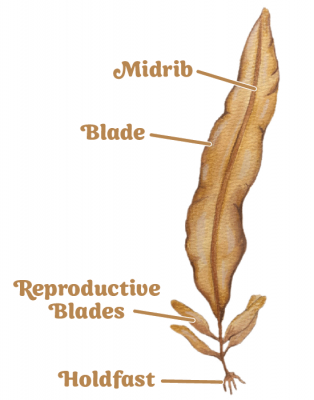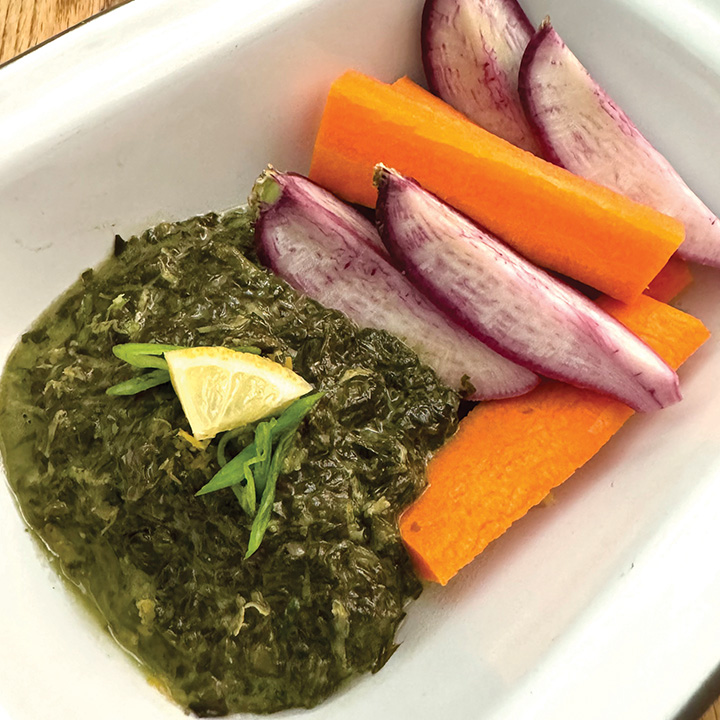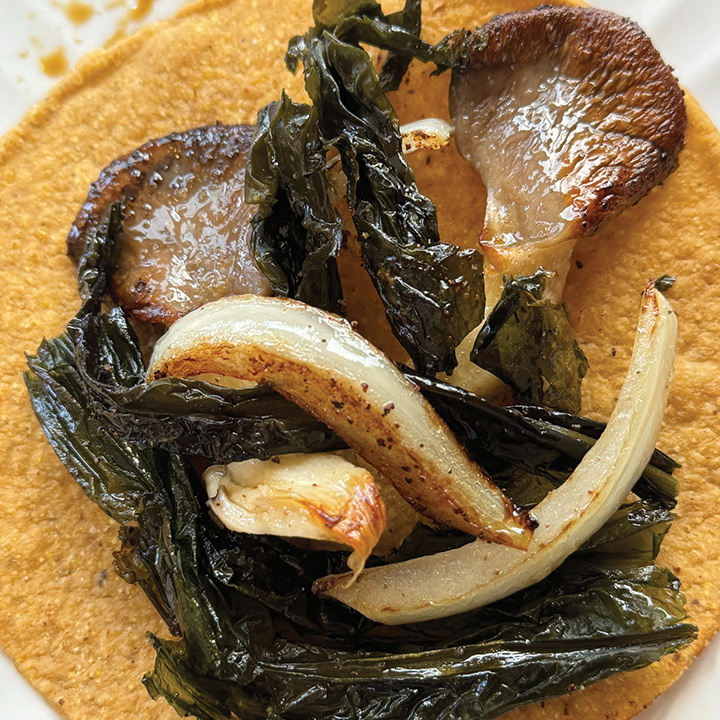
Profile
Ribbon Kelp (Alaria marginata)
Ribbon kelp features long, narrow blades with undulating edges and a thick spine known as a "midrib", visually similar to the midrib of leafy land vegetables like kale or chard. It can grow up to 13 feet tall and, as an annual species, it grows and dies in the span of a single season. When ready to reproduce, it sprouts short, fluttering, spore-releasing blades at its base. Ribbon kelp thrives on rocky shores in the mid to low intertidal zone from Alaska to central California in a variety of habitats, from exposed to semi-protected.
For generations, ribbon kelp has been integral to the traditional lifeways of Pacific Northwest indigenous cultures. Beyond its practical uses for food and medicine, ribbon kelp has been woven into the myths and spiritual practices of Alaskan tribes since time immemorial, symbolizing connections between humans, the supernatural, land, and sea. For indigenous people of Alaska, farming ribbon kelp has become a way to reclaim native knowledge that has been appropriated over the centuries.
 Flavor Profile (notes and cooking tips)
Flavor Profile (notes and cooking tips)
Salty, bitter, clean, refreshing, with light umami
Texture
Light and feathery
Preparation Tips
The blades and midrib of ribbon kelp have distinct textures, densities and cook times so it's best to separate them as you would a kale leaf from its stem. Use kitchen shears to cut the blades along both sides of the midrib before storing or cooking. To soften the fibrous texture of the midrib, simmer for 10-20 minutes.
Where is it Farmed?
Open-ocean farms in Alaska
Harvest Season
Late spring to early summer
Nutrition
High in B-12, vitamins A, C, K, and E, calcium, magnesium, manganese, chromium, zinc, iodine, iron & phosphorus.
Storage Tips
Refrigerate and consume fresh kelp within 5 days of harvest. To prolong shelf life, freeze or dry in dehydrator and store in a cool, dry place.
Environmental Benefits
Absorbs CO2 from the ocean and produces oxygen, provides shelter to commercially important fish and invertebrates, and protects coastlines from erosion.
Recipes

Ribbon Kelp Tapenade
Recipe by Christina Ng
Ingredients
- 1.5 cups ribbon kelp
- 2 cloves garlic - chopped
- 1 tbsp capers
- juice and zest of 1 lemon
- 1 tbsp champagne or white wine vinegar
- 3/4 tsp salt
- 1/4 tsp black pepper
- 2 green onions - chopped
- 1 tbsp water
- 1/4 cup olive oil
- Pinch of sugar
Yields 1 Pint
Directions
- Add ribbon kelp, garlic, capers, lemon juice and zest, champagne vinegar, salt, pepper, green onions, and water to a food processor bowl.
- Pulse 6-8 times until items are chopped up.
- Add olive oil and sugar and pulse 4-5 more times until desired consistency is reached.
- Serve tapenade over avocado toast, eggs, or alongside
- fresh veggies.

Ribbon Kelp & Oyster Mushroom Tostadas
Recipe by Jules Marsh, Kelpful. Kelp sourced from Daybreak Seaweeds
Ingredients
- 0.75 oz dried ribbon kelp
- 3 oz mushrooms (oyster mushrooms recommended) - whole & separated
- 1 yellow or sweet onion
- finely sliced
- 2 cloves of garlic - minced,
- 2 tbsp olive oi
- 6-8 tostada shells
Directions
- Saute onions and mushrooms until onions are translucent, then add garlic and stir for ~1 minute until fragrant.
- Add dried ribbon kelp and saute until everything is golden brown and ribbon kelp is crispy. NOTE: do not add any salt, typically the kelp is quite salty on its own
- Prepare your tostadas with your preferred ingredients. Recommended: layer black beans on bottom then top with kelp/mushroom mixture, a pineapple salsa, & sliced avocado.